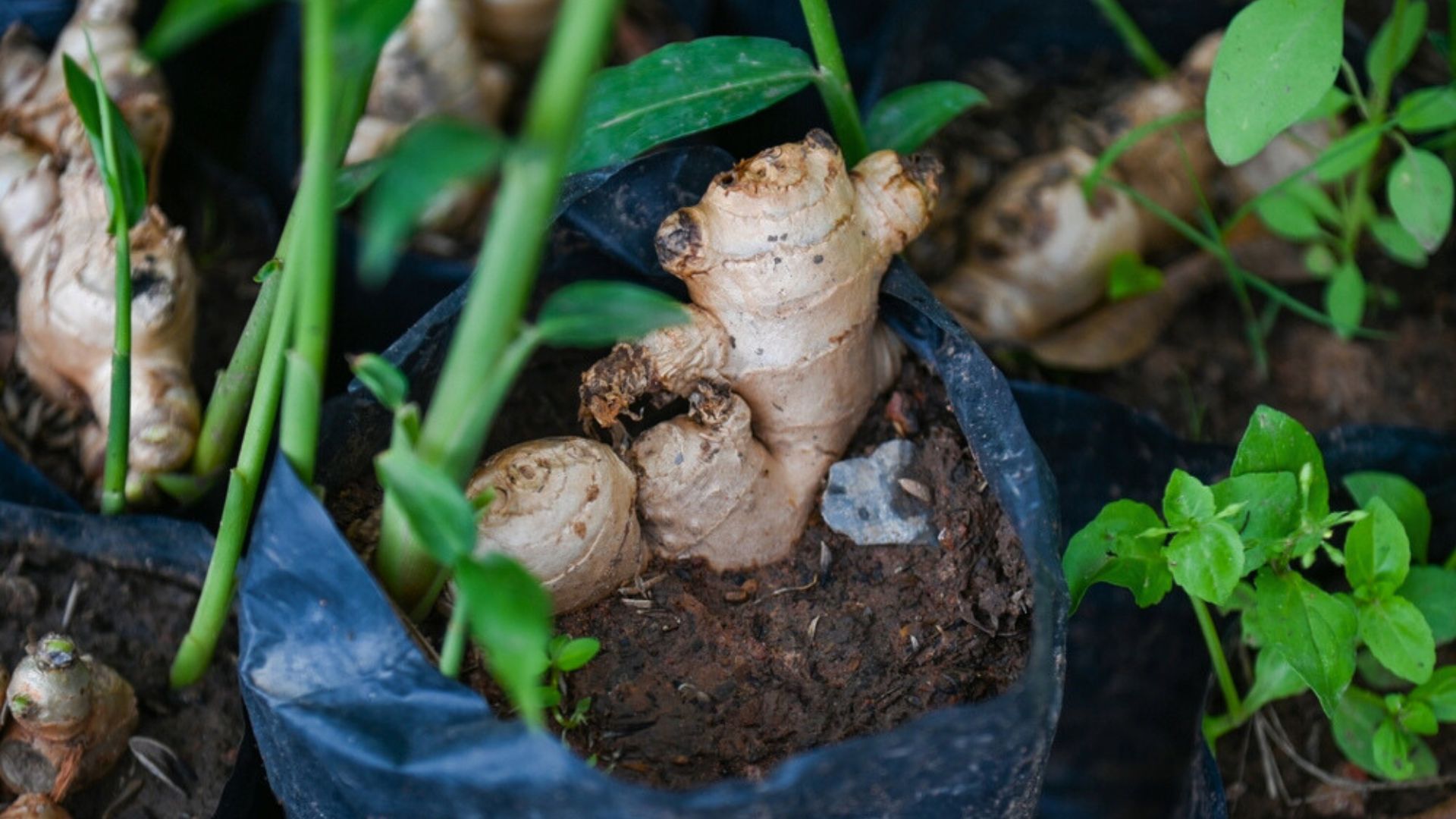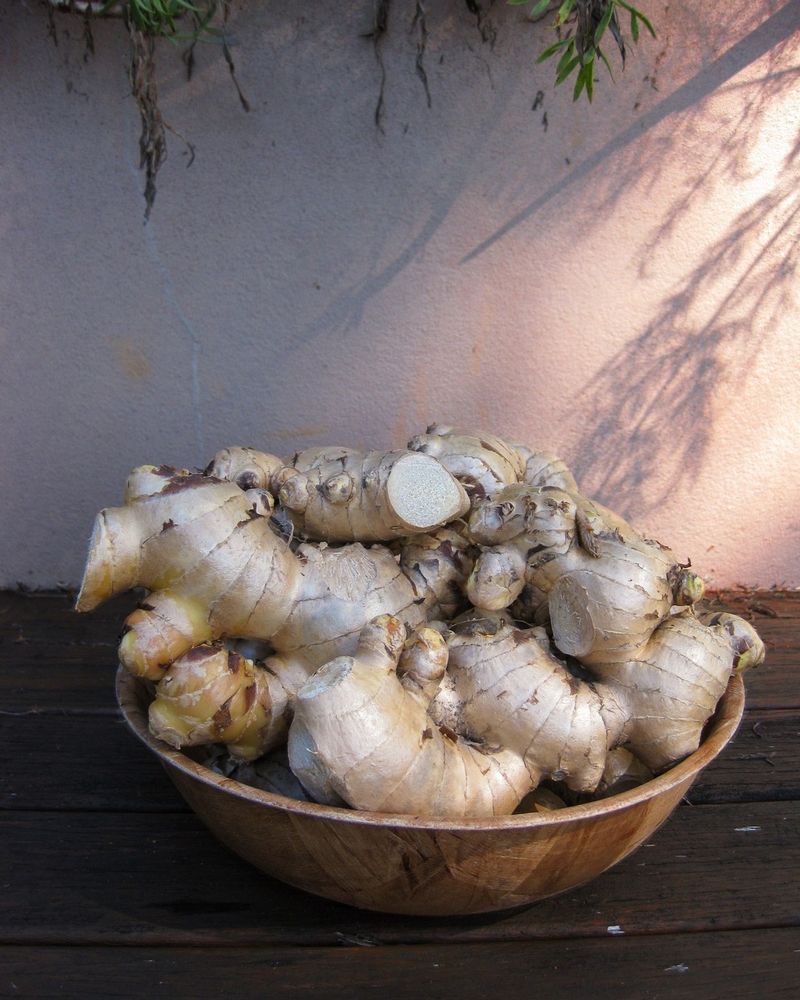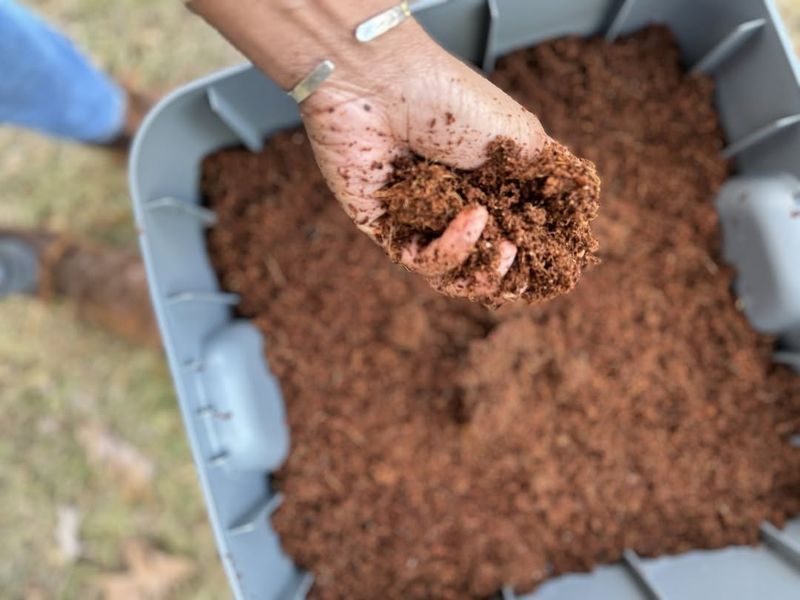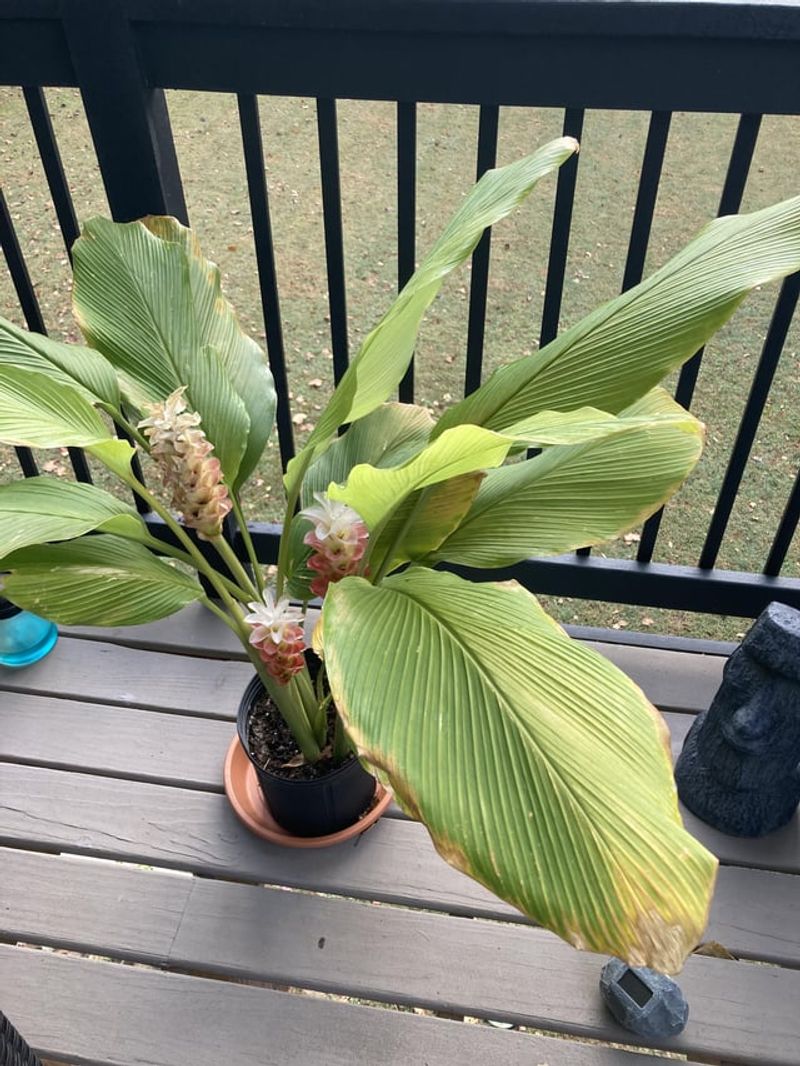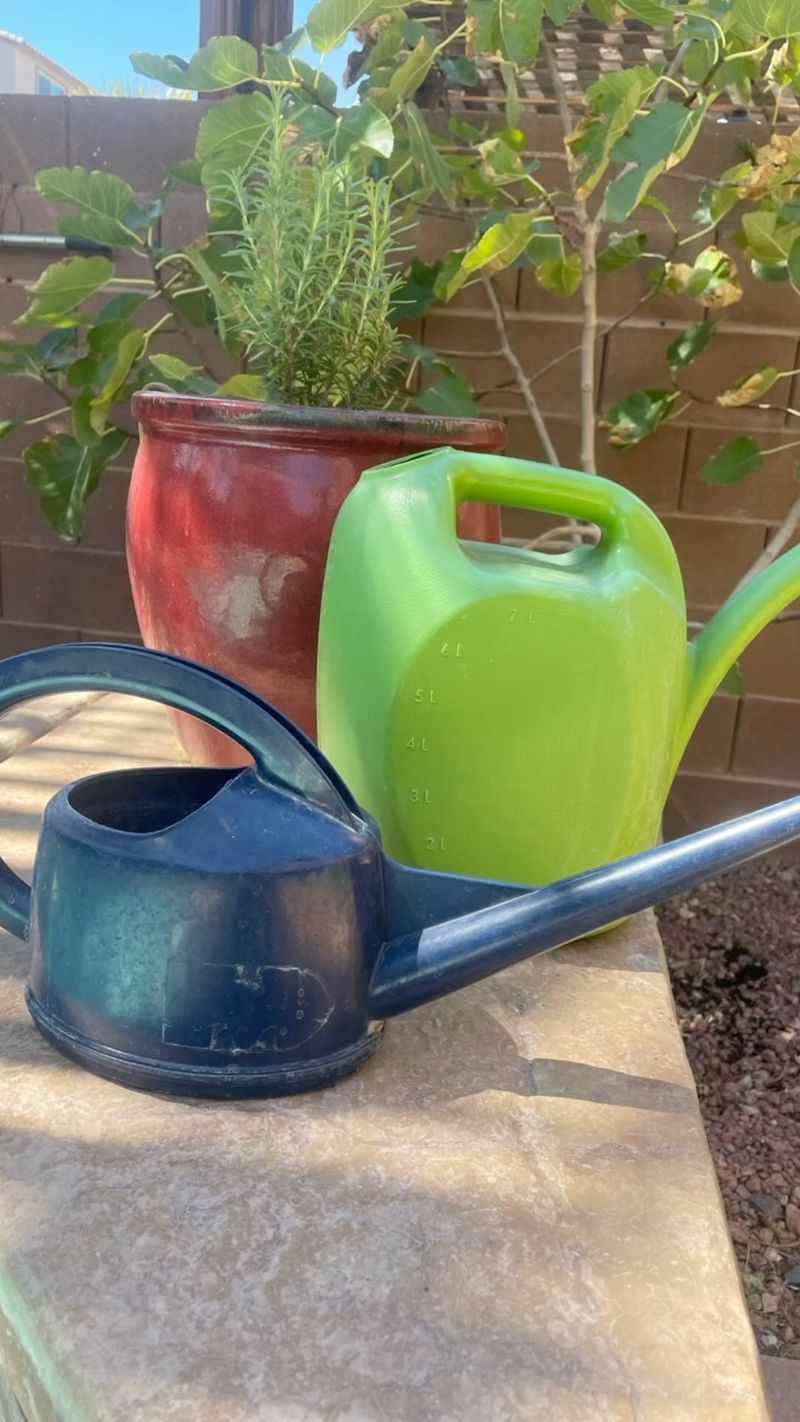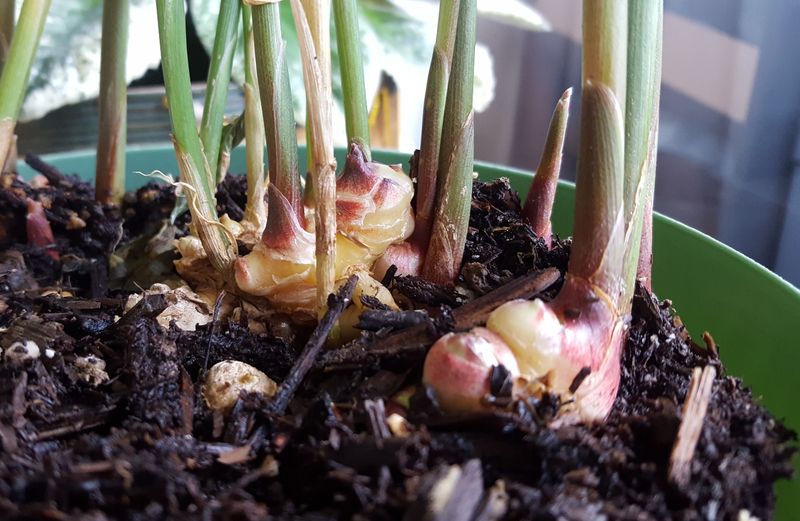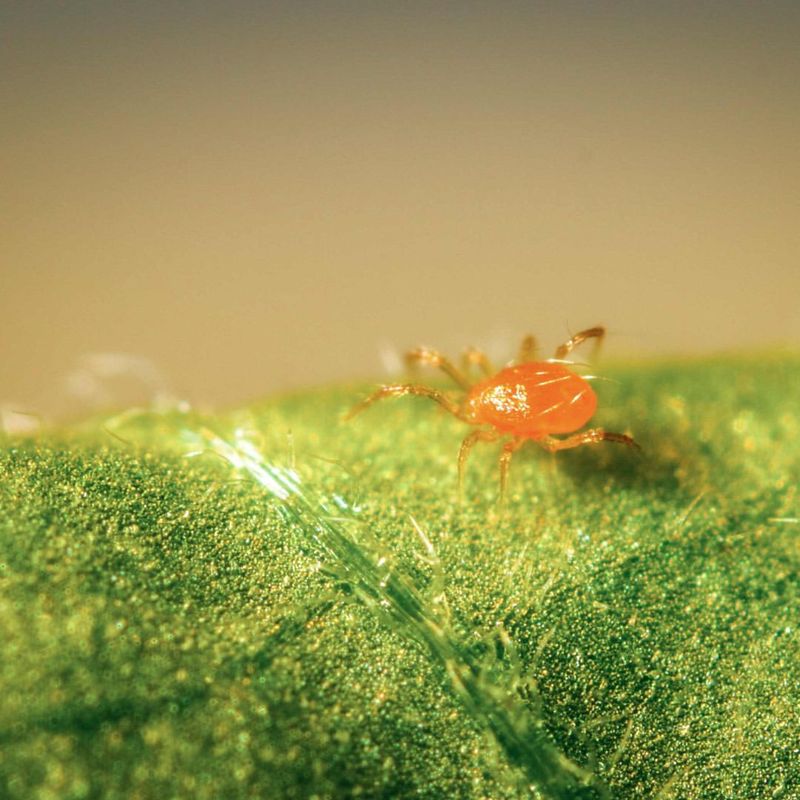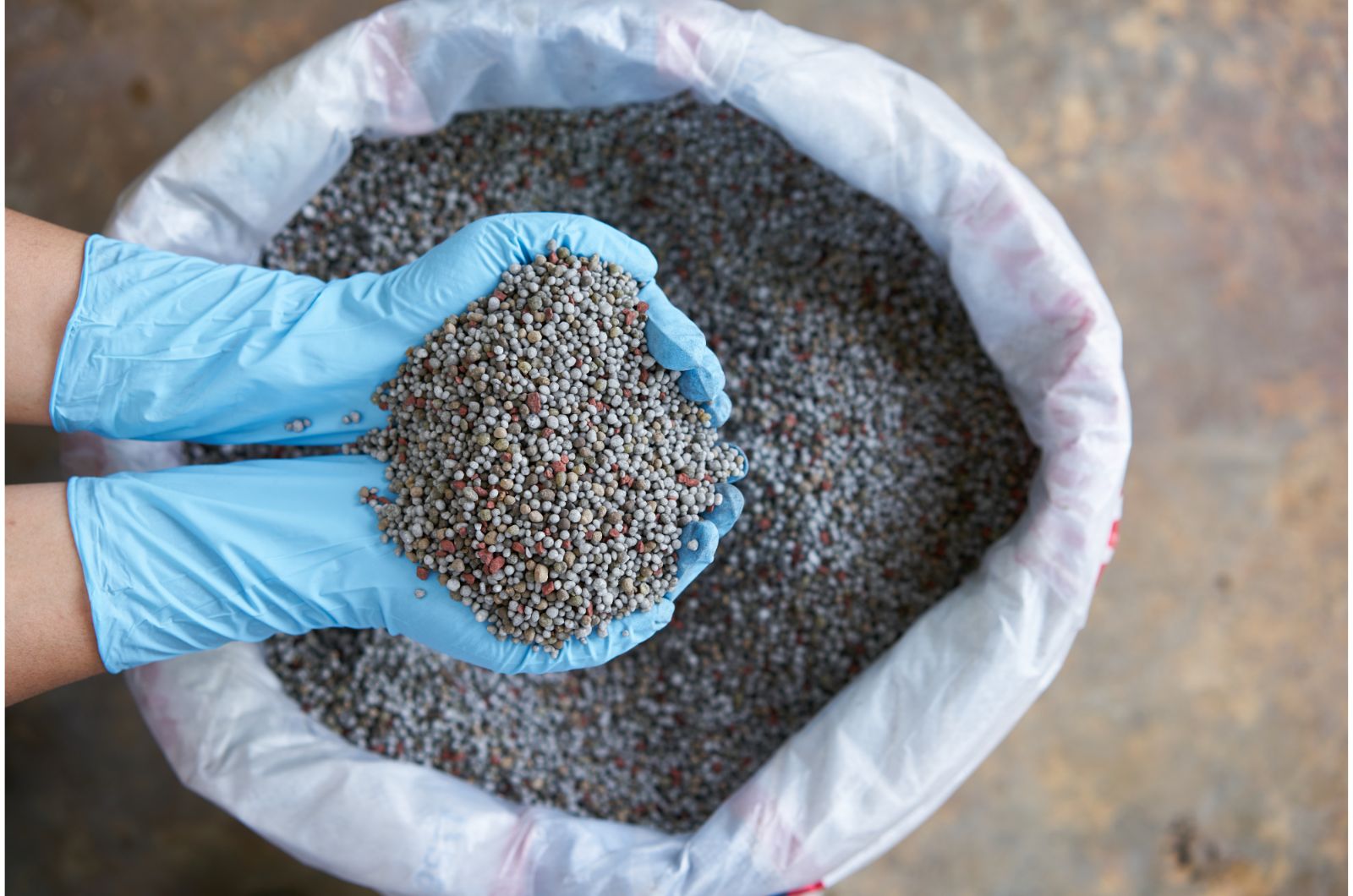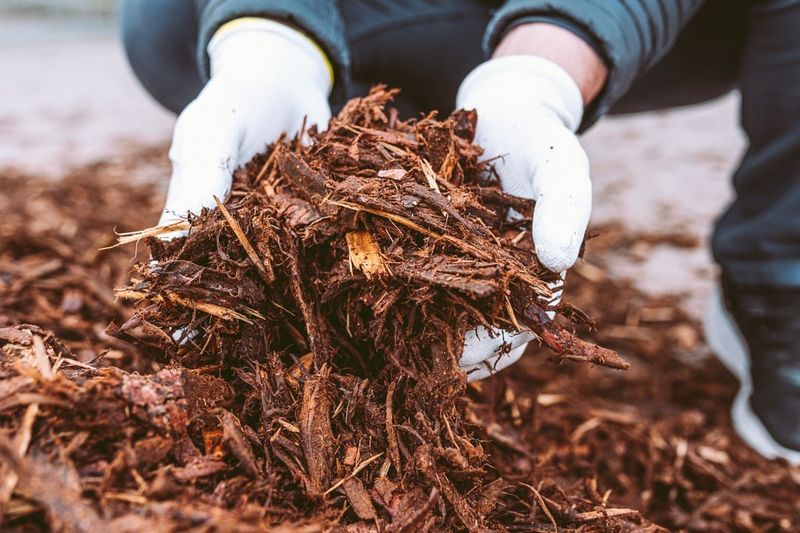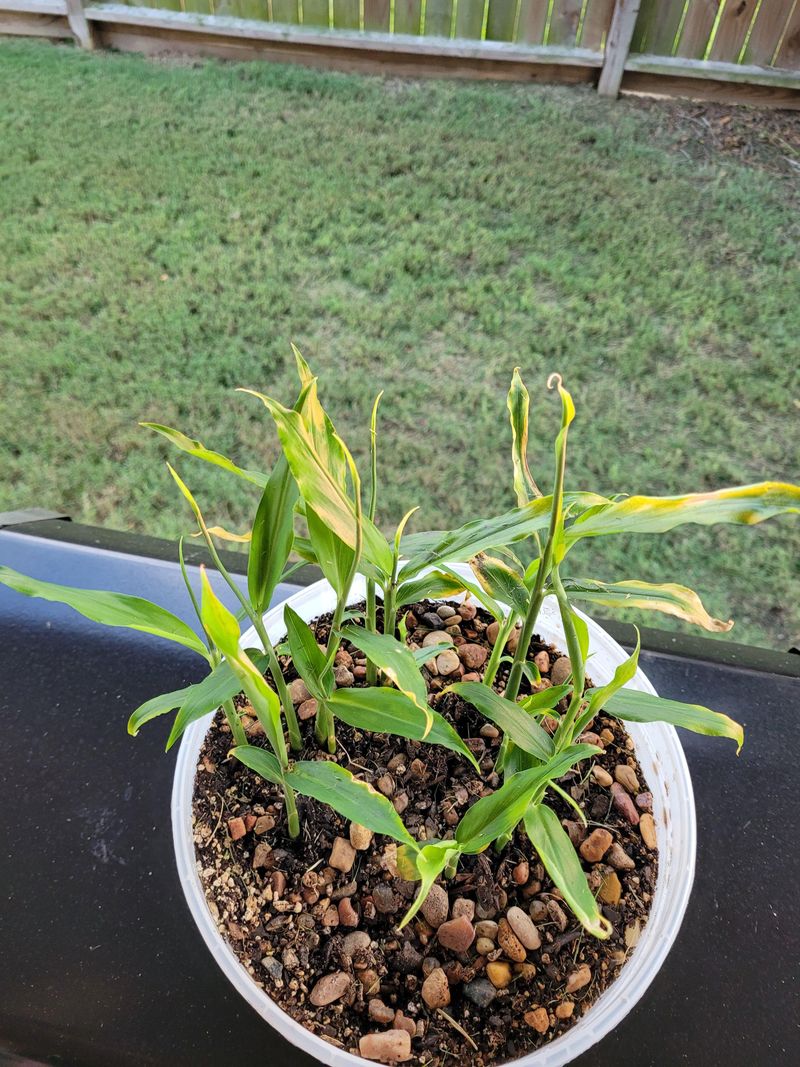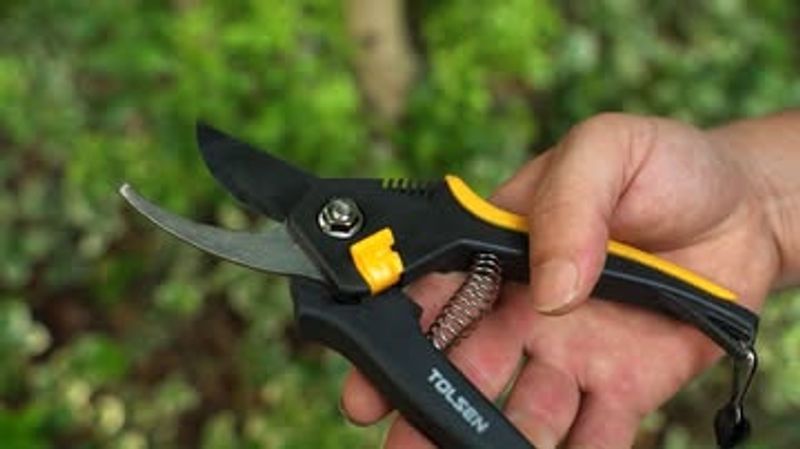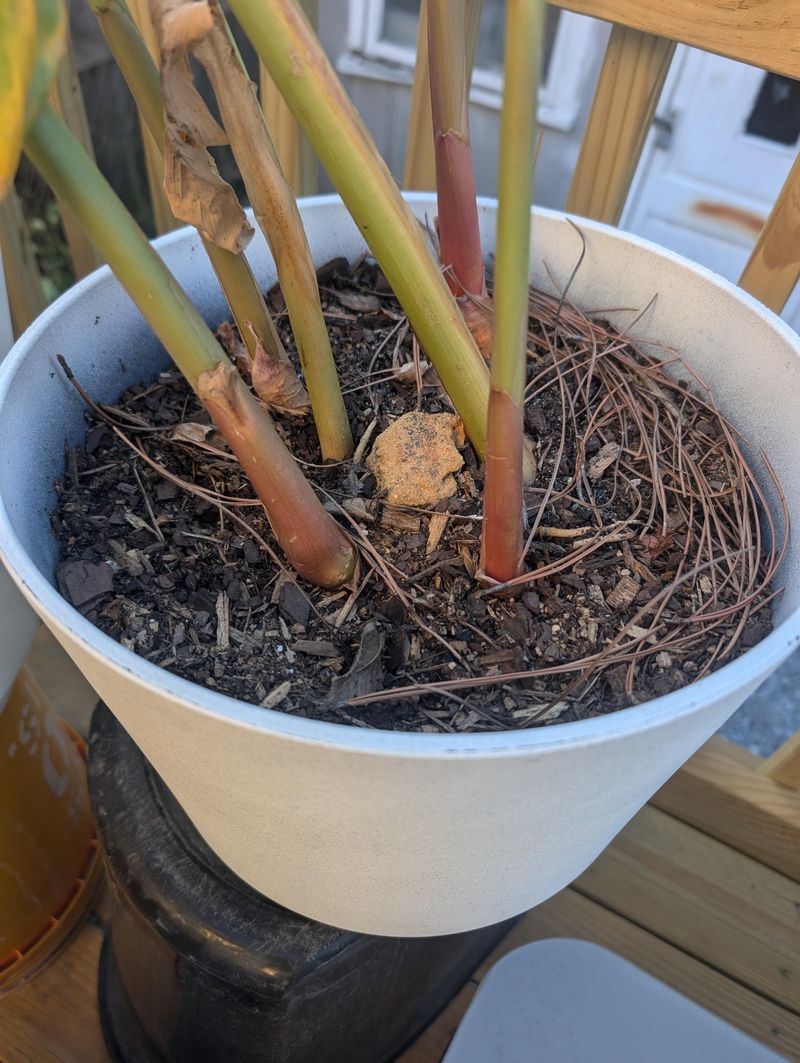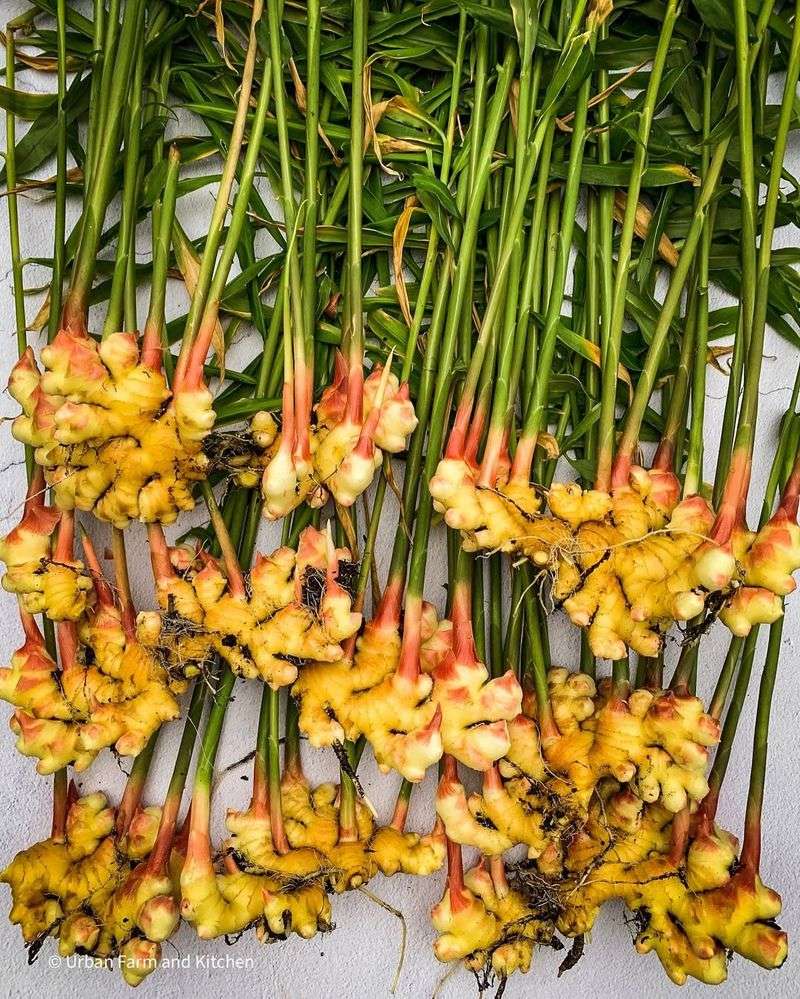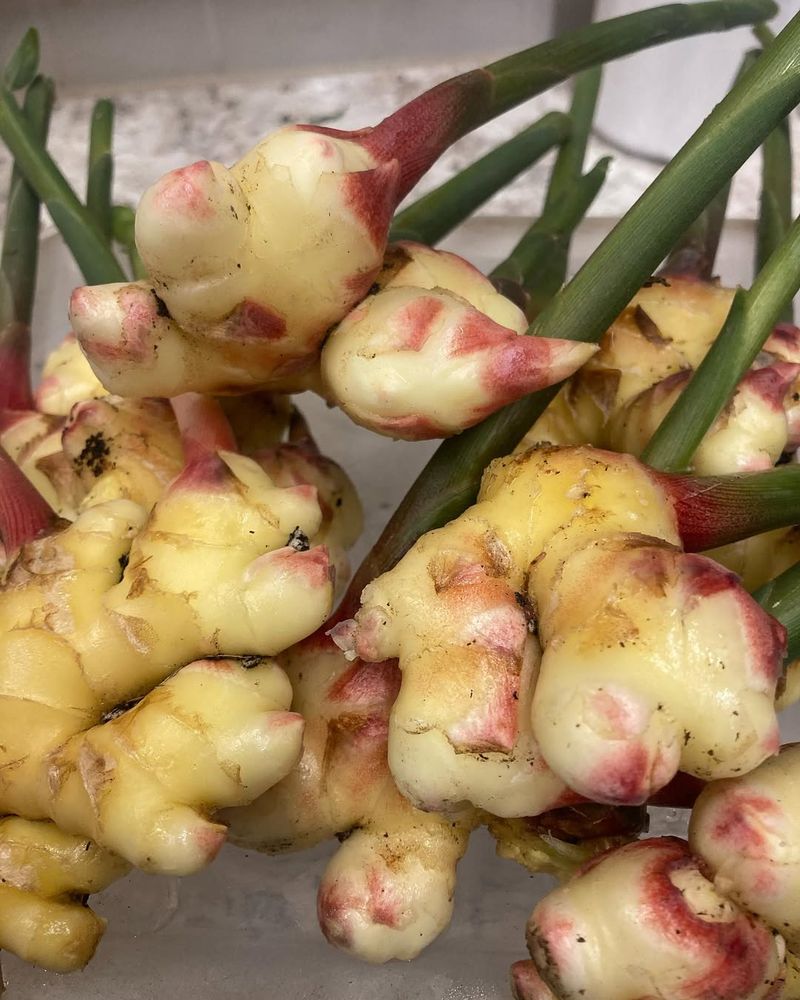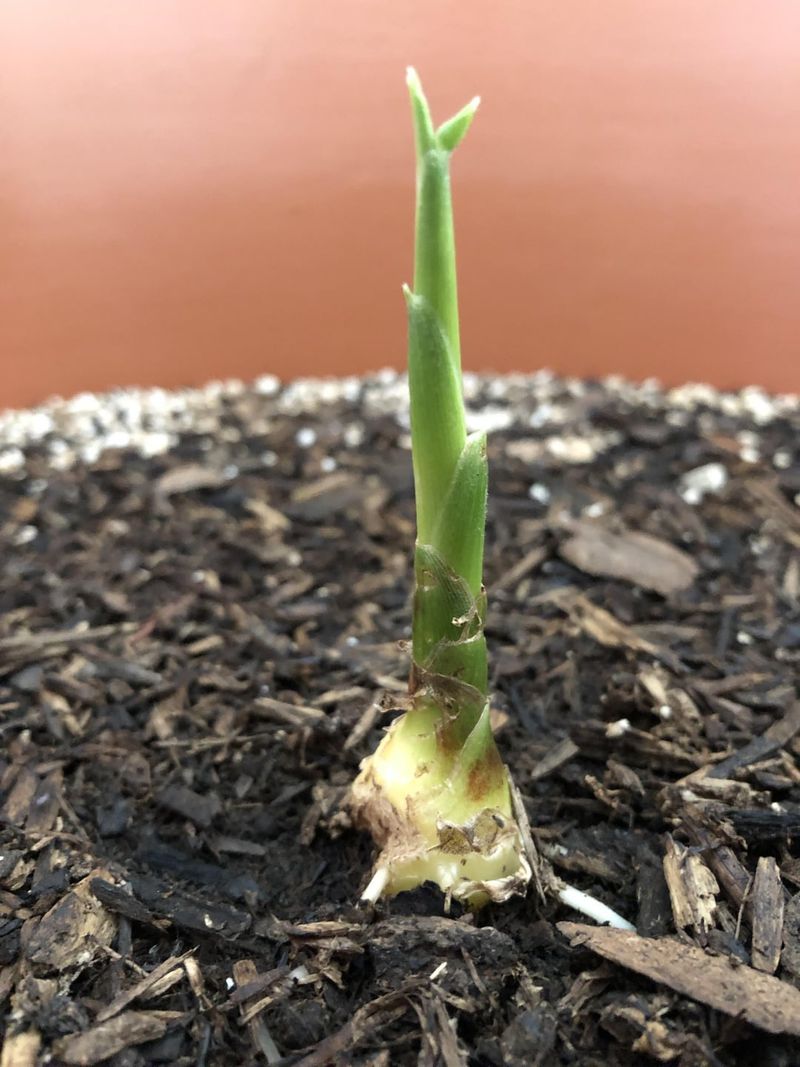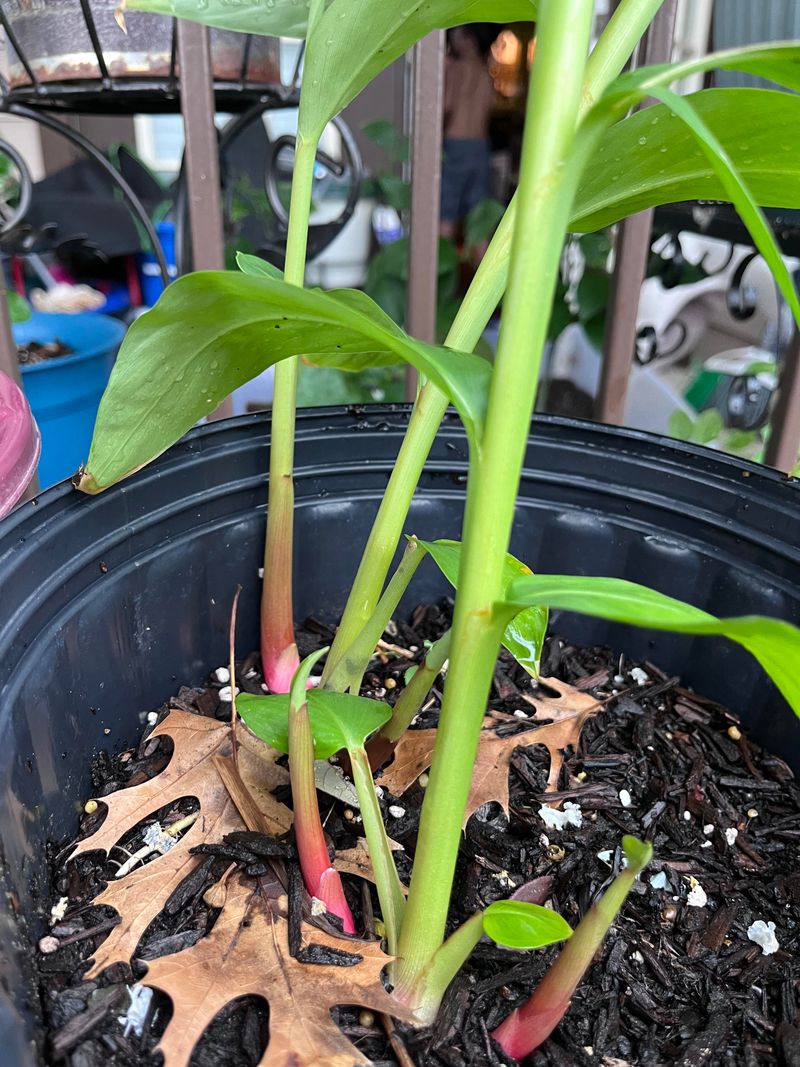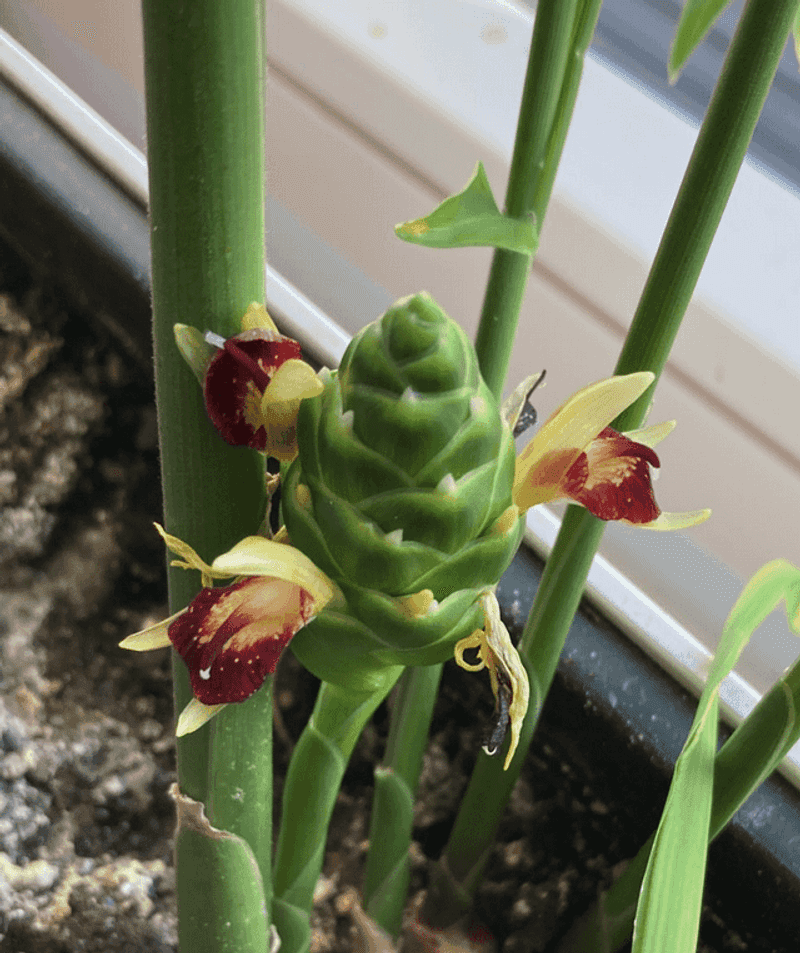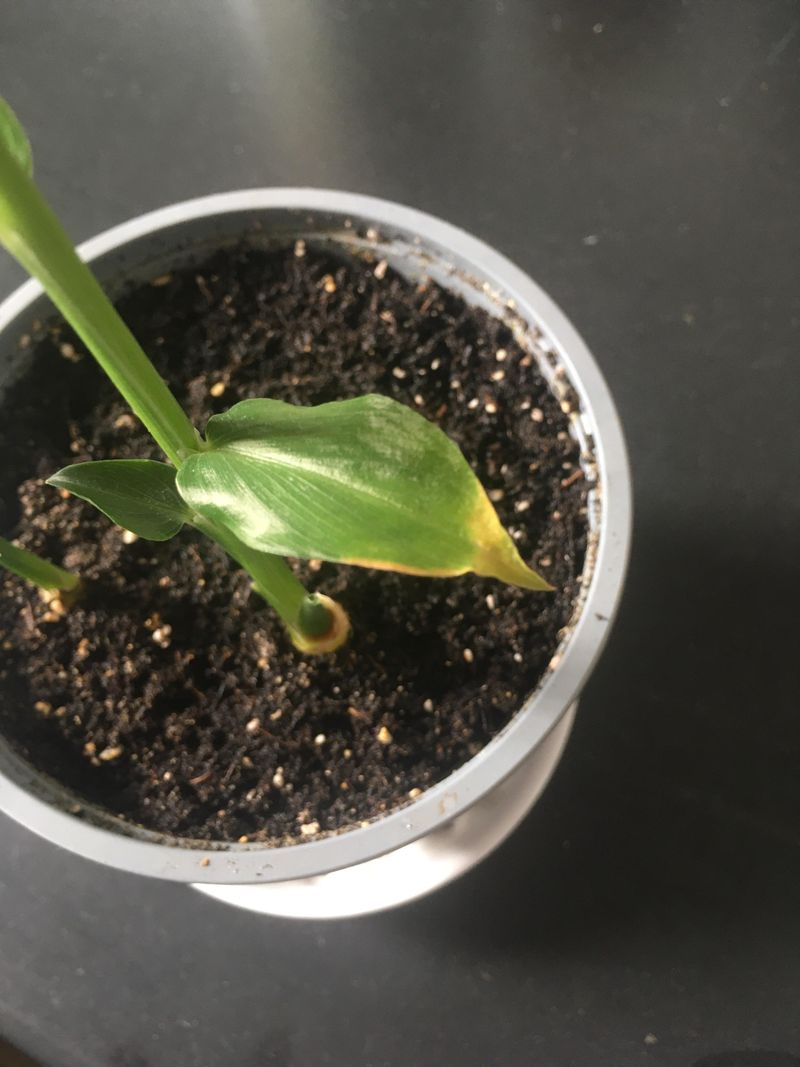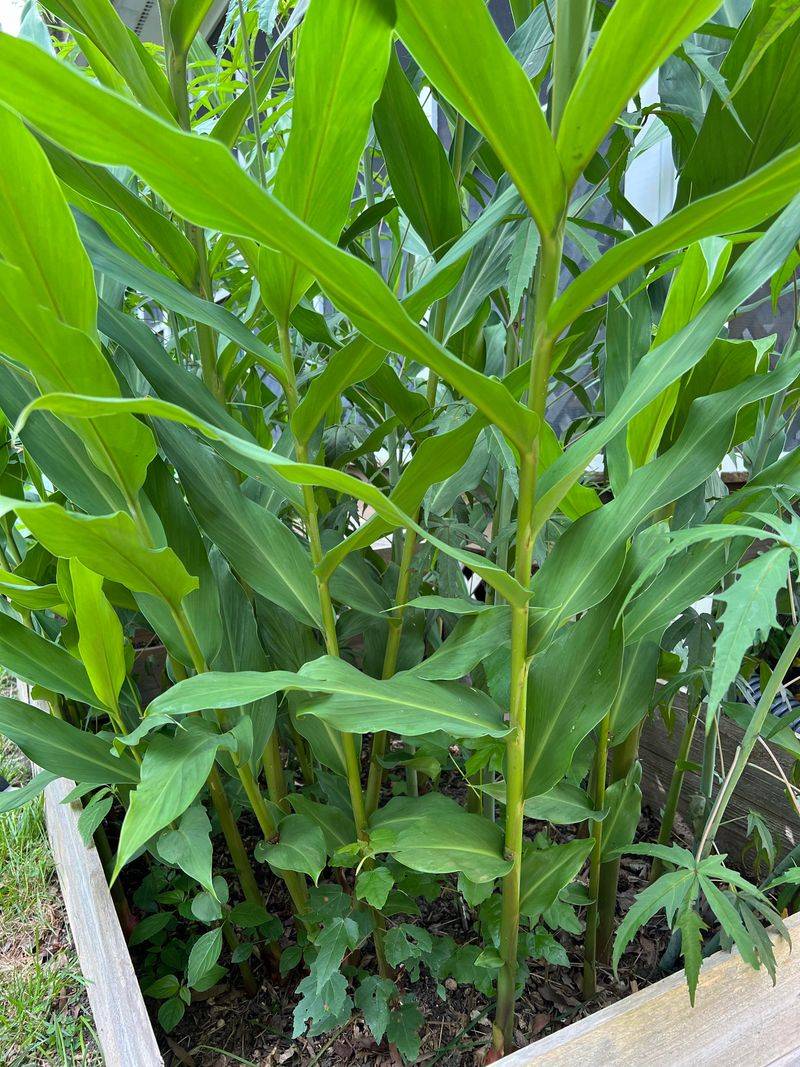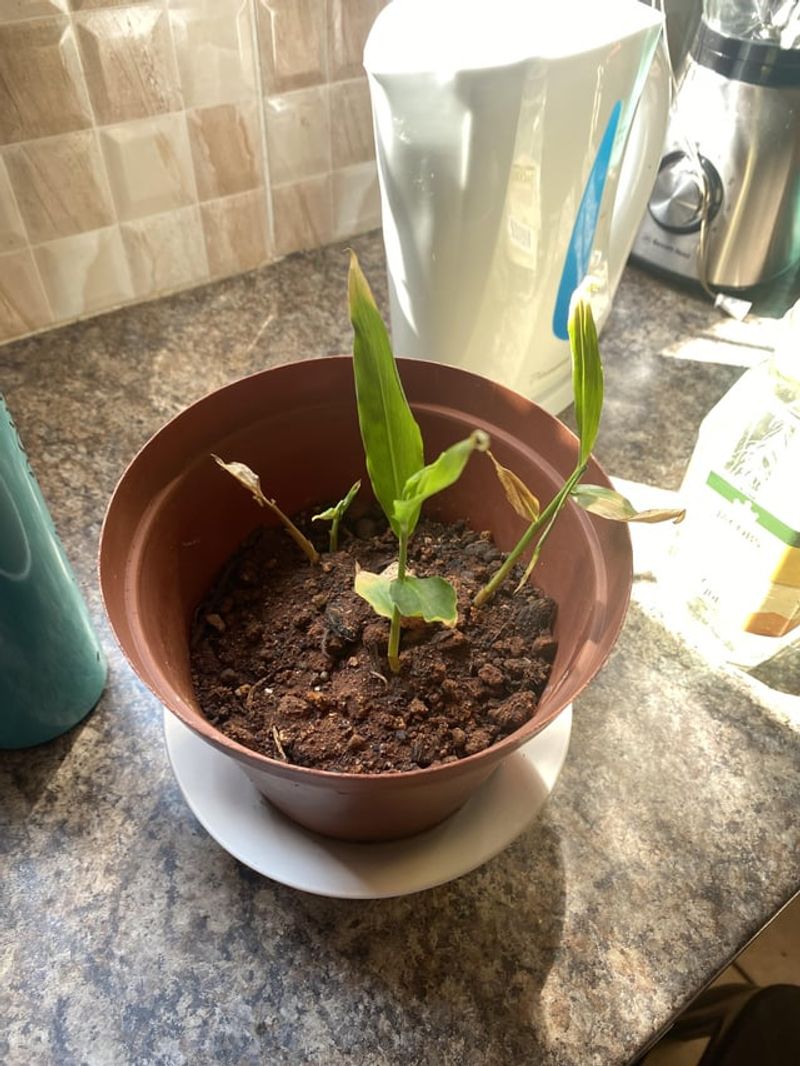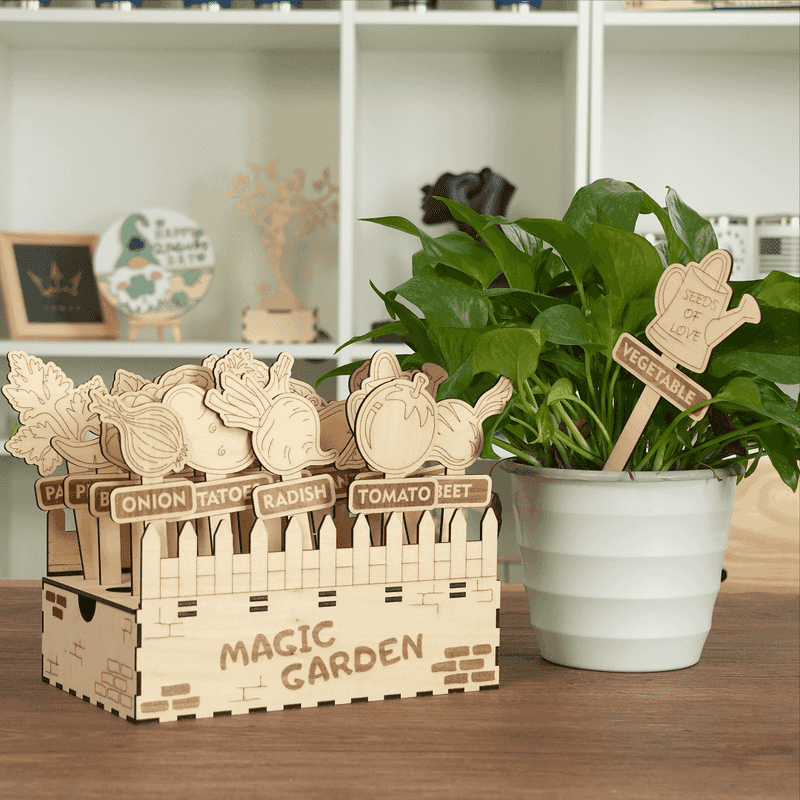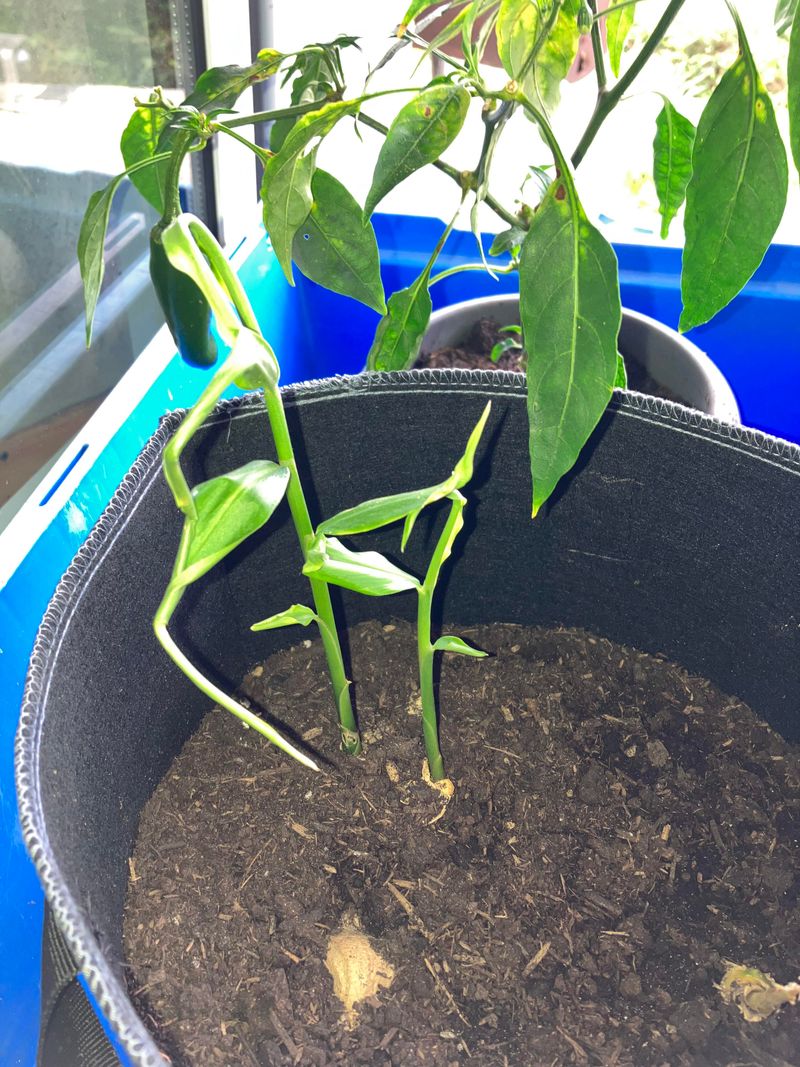Growing ginger in containers is easier than you might think—and the results can be seriously impressive. With a few simple steps and the right conditions, you can go from store-bought rhizome to a big, healthy harvest right on your balcony or windowsill.
No backyard needed, just sunlight, good soil, and a bit of patience. These 26 easy steps will show you exactly how to make it happen and get the most out of your ginger plant.
1. Choose the Right Container
Picking the right container is crucial for success. Ginger, being a root crop, thrives in wide, shallow containers more than deep ones. Ensure the container has ample drainage to prevent waterlogging, which can rot the roots.
Consider materials like clay or plastic, each having its pros and cons. Clay pots are breathable but heavier, while plastic ones are light and retain moisture better. Make your choice based on your specific needs and the environment where the container will be placed.
2. Select Quality Rhizomes
Starting with quality rhizomes can make all the difference. Look for plump, firm rhizomes with visible eyes or buds. These are the points where new growth will sprout. Avoid any that appear shriveled or moldy.
A trip to your local organic market or gardening store is a great way to find suitable options. If possible, ask the seller about the origins and whether they have been treated with growth inhibitors.
3. Prepare the Soil Mix
A well-prepared soil mix can be the bedrock of a healthy plant. For ginger, a loose, well-draining soil with plenty of organic matter is best. Mix equal parts potting soil, sand, and compost to create a rich environment for growth.
This combination ensures that the soil retains moisture while allowing excess water to drain away. You can also add a handful of worm castings for an extra nutrient boost.
4. Position for Optimal Sunlight
Choosing the right spot for your container is key to healthy growth. Ginger loves warmth and sunlight, so aim for a location that receives at least six hours of indirect sunlight a day. Direct sunlight can be too harsh and dry out the soil quickly.
Balconies, patios, or a sunny spot inside near a window can work wonders. Adjust as needed to find the perfect balance of light and shade.
5. Water Smartly
Watering is an art form in itself. Ginger needs consistent moisture, so aim to keep the soil damp but not soggy. Over-watering can lead to root rot, a dreaded outcome for any gardener.
On the flip side, letting the soil dry out too much can hinder growth. Stick your finger into the soil; if it feels dry an inch below the surface, it’s time to water. Adjust frequency with the changing seasons.
6. Understand Temperature Needs
Temperature plays a pivotal role in ginger’s growth. These tropical plants thrive in temperatures between 70°F to 90°F. Cold snaps can be detrimental, slowing growth or even killing immature plants.
If you live in cooler climates, consider bringing containers indoors during the cold months. Using a thermometer to monitor conditions and make necessary adjustments can save your plant from seasonal woes.
7. Monitor for Pests
Keeping an eye out for unwanted visitors can save your ginger from damage. Common pests like spider mites or aphids can wreak havoc if not addressed. Regularly check the undersides of leaves and the soil surface.
Introduce beneficial insects like ladybugs or use organic pest sprays for control. A healthy plant is less susceptible, so maintaining good care practices is your first line of defense.
8. Fertilize Appropriately
Feeding your plant is like giving it a vitamin boost. Ginger benefits from regular feeding with a balanced organic fertilizer. Start with a light application once the plant starts to sprout and continue every month.
Over-fertilizing can burn the plant, so moderation is key. Liquid fertilizers are easy to apply and often contain seaweed or fish emulsion, providing essential nutrients without overwhelming the plant.
9. Mulch to Retain Moisture
Mulching is like putting a cozy blanket over your plant’s roots. It helps retain moisture, suppress weeds, and maintain a consistent temperature. Use organic materials like shredded bark or straw.
Apply a two-inch layer around the base of the plant, being careful not to cover the rhizomes directly. This simple step can significantly reduce watering frequency and keep your ginger thriving.
10. Rotate the Container
Sometimes the simplest actions make the biggest impact. Rotating your container every couple of weeks ensures the plant receives even sunlight exposure. This prevents it from leaning towards the light source and growing unevenly.
It’s a quick and easy task that can lead to healthier, more robust growth. Mark your calendar or set a reminder to keep this small but mighty habit in check.
11. Prune for Better Growth
Pruning is like giving your plant a haircut. It encourages new growth and prevents the plant from becoming too bushy. Remove any yellowing leaves or stems that seem out of place. This not only tidies up the appearance but also directs energy towards healthy growth.
Regular pruning can lead to a more productive plant, ensuring you get the most out of your ginger-growing efforts.
12. Understand Growth Stages
Knowing the different stages of your plant’s life is vital. From sprouting to maturing, each phase has its own needs. Young plants require more attention with watering and temperature, while mature plants need more space as the rhizomes expand.
By understanding these stages, you can adjust care practices to meet the changing demands. This knowledge can make the difference between a thriving plant and one that struggles.
13. Harvest at the Right Time
Timing is everything. Harvesting too early can lead to less flavorful rhizomes, while waiting too long can make them tough. Typically, ginger is ready to harvest after about eight to ten months. Look for yellowing leaves as a sign.
Use a small tool to gently dig around the base, being careful not to damage the rhizomes. It’s a rewarding process that marks the culmination of your care and patience.
14. Store Harvested Ginger Properly
After the harvest, proper storage ensures longevity. Allow the rhizomes to air dry for a day or two. This helps to toughen the skin and prolongs shelf life. Store the ginger in a cool, dry place, ideally in a paper bag or loosely wrapped in a towel.
Avoid refrigeration if you plan to plant them again, as it can hinder future growth. Proper storage keeps your harvest fresh and ready for use.
15. Replant for Continuous Supply
The cycle doesn’t have to end with the first harvest. Replant segments of rhizomes with visible buds to continue the process. This ensures a continuous supply throughout the year. Use fresh soil mix to give the new plants the best start.
By maintaining a cycle of replanting, you can enjoy homegrown ginger indefinitely. It’s a sustainable way to keep fresh ingredients at your fingertips.
16. Control Humidity Levels
Humidity, the unsung hero of plant health, is crucial. Ginger thrives in humid conditions, mimicking its natural tropical habitat. If the air in your home is dry, especially during winter, consider using a humidity tray or placing a small humidifier nearby.
Monitoring humidity levels with a hygrometer can help you make adjustments as needed. This small step can improve growth and vitality significantly.
17. Ensure Proper Ventilation
Good airflow keeps plants happy. Ensure your ginger receives proper ventilation to prevent mold and fungal issues. Placing containers near a window or on a porch can aid in maintaining airflow.
If growing indoors, occasionally open windows or use a fan to circulate air. This simple action can help prevent problems that arise from stagnant air and promotes a healthier growing environment.
18. Protect from Frost
Frost is the arch-nemesis of many plants. Ginger, being sensitive to cold, needs protection during chilly times. If frost is forecasted, bring containers indoors or use frost cloths to shield them.
This precaution can save your plant from potential damage. The extra effort ensures your ginger continues to thrive despite the weather’s challenges.
19. Check for Disease Signs
Vigilance is key. Regularly inspect your plant for signs of disease, such as discoloration or wilting leaves. Early detection can prevent the spread and save your plant from serious harm.
If you notice anything unusual, remove affected parts and treat with organic fungicides or consult an expert. Keeping your ginger healthy requires proactive care and attention to detail.
20. Use Companion Planting
Companionship in the plant world can be beneficial. Growing ginger alongside certain herbs like basil or cilantro can enhance growth by deterring pests and creating a balanced ecosystem.
It’s like having a supportive friend nearby. Just ensure the container is large enough to accommodate all plants comfortably. This partnership can lead to healthier plants and a more diverse harvest.
21. Incorporate Organic Practices
Going organic can make a world of difference. Use organic fertilizers and pest control methods to keep your ginger healthy and chemical-free. It’s a cleaner, greener approach that benefits both the plant and the environment.
Compost tea or neem oil are excellent organic solutions. This method not only ensures safe produce but also supports sustainable gardening practices.
22. Mind the Growth Rate
Every plant grows at its own pace. Monitoring growth rate helps in understanding your plant’s health. If the growth seems sluggish, assess factors like light, water, and nutrients. Sometimes, minor tweaks can spur rejuvenation.
Keeping a journal of growth milestones can also provide valuable insights for future planting endeavors. This awareness helps in maintaining a thriving container garden.
23. Label Your Plants
Labels are more than just a name tag. They help in tracking planting dates, growth observations, and care instructions. A simple marker with the plant’s name and date of planting can be a handy tool.
It’s a small gesture that aids in organization and planning for replanting schedules. This clarity ensures a well-managed container garden, making it easier to apply tailored care for each plant.
24. Consider Vertical Gardening
Space can often be a limitation, but not in gardening. Vertical gardening allows you to maximize space by stacking or hanging containers. It’s perfect for small areas like balconies.
Ensure proper support and stability for your containers as they grow. This innovative approach not only saves space but also adds an interesting visual element to your garden setup.
25. Plan for Seasonal Changes
Planning is the backbone of successful gardening. Anticipate seasonal shifts and prepare your plant accordingly. In warmer months, ensure adequate shade and water. During colder seasons, focus on protection and warmth.
Remember, flexibility is key. Adapting your care routine to match the changing seasons ensures your ginger continues to flourish regardless of external conditions.
26. Experiment with Different Varieties
Diversity adds spice to life. Experiment with different ginger varieties to discover distinct flavors and growth characteristics. Some may thrive better in containers than others. This variety can enrich your culinary experiences and gardening knowledge.
Try sourcing from reputable nurseries or seed exchanges to ensure quality. It’s an adventure that can lead to delightful surprises in your garden journey.

